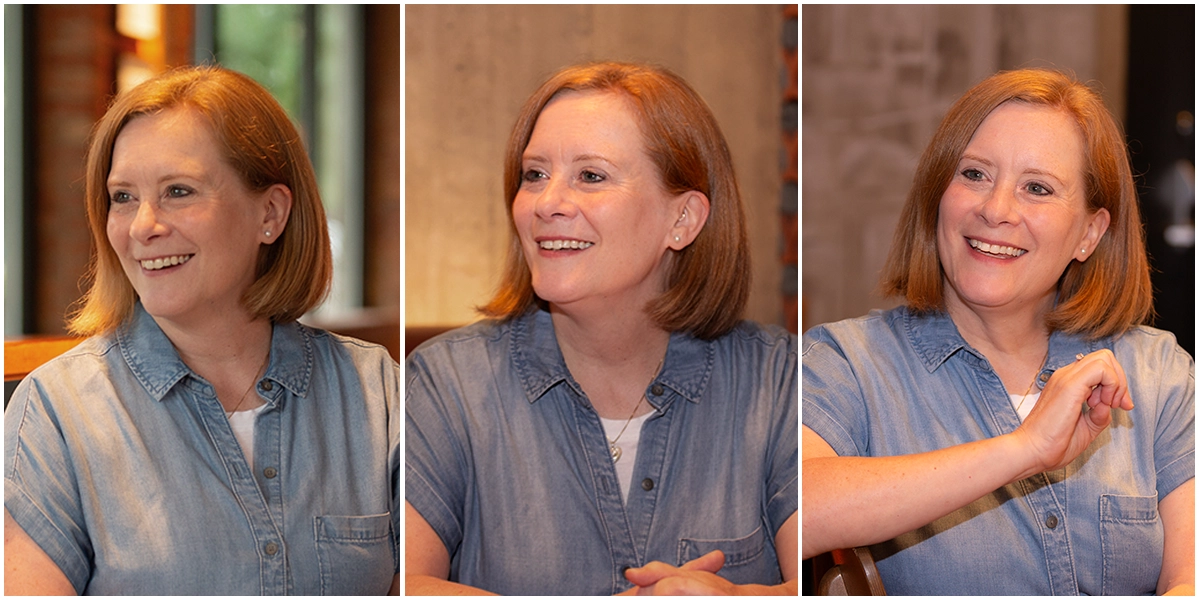OEMs first began offering product video in the mid-2000s. Producer Amy Simonelli has been there from Day One, applying years of agency experience to transform information video into an extension of brand marketing. Amy initially oversaw information video for a Detroit-area production house. Then, she helped establish a dedicated, full-service information video team within Tweddle Group’s Creative Services area.
We sat down with Amy for a full, 360° discussion on all aspects of product information video.
In our first installment, we look at the importance of branding within product video, the struggles companies face in becoming the authoritative voice on their own products and how she helps make information video attainable for a wide range of clients.
Branded Product Video
How important is branding when you’re producing product video content? And I guess the flipside of that is, if a manufacturer outsources their product video, how can they ensure the content aligns with their corporate branding?
Well, branding is critical for any sort of product video content. Even though, in theory, you’re creating a post-purchase resource for consumers, you want that resource to have total continuity with any other material they might encounter.
When we produce product video, we operate as a direct extension of the client brand. We’re communicating with the consumers who’ve purchased that product. That should be foremost in your mind—you’re supporting the user experience for that product and you’re building future loyalty for that brand.
So, the work we produce has to lock right in with any other messaging a brand puts out into the universe.
What does that look like in actual practice? How do you accomplish that, working as a vendor/supplier/partner?
There are tangible elements—for example, using the right logos, the right color palettes. You want to match the brand approach used in the client’s commercials or any other marketing materials. The supplier needs to adapt that marketing approach to any support content they produce.
In Tweddle Group’s case, our teams have extensive agency experience. We’ll get the brand style guides, and our teams speak that language very well. They’re good at understanding and interpreting those guidelines, whether it’s video, print or something else. Brand is critically important when messaging consumers.
What about distribution? There are so many channels, and more keep popping up. How does a company decide the best channels to get a video to its desired audience?
Those decisions are best made in consultation between the company and their product video production partner. It’s never one size fits all for video, right? There are a variety of things to consider, and it depends on the type of video.
Obviously, if you’re creating a consumer-facing video, you want to be on YouTube. That’s where people go to look.
You want it on your brand website, too. It’s safe to say people will also go there to search for information.
But there are likely going to be other venues as well. Some brands are using TikTok now to communicate with folks.
You need to understand the consumers purchasing the product now, of course, but who are the aspirational consumers? Who does a brand want to bring on board? Because you’ll want to meet those people where they are, too. That’s extremely important.
But it goes beyond where you place the content. That’s an important concern, but you have to remember—YouTube is an endless abyss of content. Just throwing a product video onto YouTube doesn’t guarantee anyone will see it.
You need to make sure your content is rising to the top when people look for information.
Search engine optimization is important. You have to use keywords properly to make sure your content ranks high on the first page of search results.
If the content you make gets lost in the void, if nobody can find it, it’s not helping anyone.
"When you look at customer activity you uncover really surprising details about customer pain points. And brands can use product video to get out in front of that."
I know we’ve all seen consumer-produced “complaint videos” or “negative explainer” videos. Is there ever a risk that those types of video could rank higher in a YouTube search than official product content?
Sure. Yes. Absolutely.
How is that even possible?
[Laughs] Because, I mean, it’s sort of the Law of the Jungle. Search algorithms change daily. Algorithms are indifferent and impartial.
If you’re not using the right parameters with keywords, you could craft the greatest, most succinct piece of content ever made and have it get completely lost in the shuffle.
You know, think about John Doe Consumer Content Creator, the one who’s making complaint videos or negative explainer videos. He’s been out there longer than your new content. He’s playing on customer frustration so he’s got that edge as well. He knows how to work the keywords and there he is, ranked in the top spot.
That’s why it’s important to stay on top of how these things work.
You’ve got a lot of consumer content creators who, you know, this guy’s a mechanic, he owns his own garage, and he’s found a sweet spot and he’s developed this enormous following. People like this have a massive audience seeking their advice and opinions on things.
So when a user searches YouTube for your product, that content creator we just descirbed is really who you’re competing with in your search results. It can be troubling when that individual ranks higher than the official, branded content, and it happens more often than you’d think. I don’t think a brand can afford to have that taking place.
Finding the Right Product Video Partner
So, let’s say a company decides, “All right, it’s way overdue we provide branded product information videos for our customers.” What should they look for in a video production partner to get those videos made?
That’s a big question. There are a lot of options in the video production space.
When you’re talking about producing owner video, you know, information video or educational content, what you’re really looking for is a team of folks who can look at your product from the full 360, right?
You want someone who can help you identify your customer pain points, then bring their expertise and collaborate with you to address those points in an effective way.
Who is your consumer audience? Does your product have new features that users might find confusing, or might not be aware of? What patterns do you see in your warranty activity or dealership activity?
If you look at that information, you’ll literally see where your product is succeeding and where it might need help.
Information video lets you intervene in that process. You can step in, address the consumer, help the consumer and make your product more successful in the marketplace.
You mentioned the question of who a product’s consumer base might be. How does something like that play into the type of product video you produce?
We do a good deal of persona development to understand who the core customers are for a product. That tells you a lot about the style of communication you should use, and ultimately reveals the types of videos you want to produce. You know, should this be long-form and detailed? Or does it need to be ten seconds long and you’re out?
All that understanding goes into the mix. Your goals and your production style need to align for the end result to be successful.
It’s not just about having a camera and knowing how to shoot pretty pictures. It’s not just about having a lavish, expensive production—and by the same token, it’s not just about getting it done as cheaply as possible. You want it to look good, yes. You want a manageable budget; those things are great.
But if you don’t understand the project goals, or if you understand the goals but aren’t achieving them, you need to reassess. The best approach is to ask the right questions at the outset.
How should an organization go about determining their information video goals?
It’s a complex process with multiple layers but, at the base, it’s about understanding a product and its relationship to the end-user.
Some of our customers maintain a digital library of product information, and the use of that library is trackable. If you know how to read those metrics, you can easily identify customer pain points. Dealership data and warranty activity tell a story, too.
We had a large truck manufacturer whose buyers were basically using the product improperly. Their warranty claims were through the roof. We produced a series of proper use videos for them and it brought those claims right down. It was terrific.
You’ll always want your must-have clips—your fundamental operation and maintenance topics—but when you look at customer activity you uncover surprising details about customer discomfort, and you can use product video to get out in front of that.
I would say find a video producer willing to deep dive and figure out what content you need, and how to create that content in the most effective way.
Experience is important, too. It’ll save you money and it’ll elevate the final product significantly. Basically, you’ll get better work for less money if the team involved has product video expertise.
When a team has experience in these areas, a transformation takes place where, suddenly, your video editors and your audio engineers become subject matter experts.
Our editor has been working on specific OEMs for a while now. She lives and breathes these products model year after model year. She’ll identify issues that go right by everyone else. She’ll catch things the client engineers miss.
She’s ensuring accuracy and finding efficiencies no one else would consider.
She’s able to say, “Hey, we don’t need this new vehicle shoot because we have footage of an existing vehicle whose components are exactly the same,” and that will save a ton of production cost where another team would just haul in the vehicle and shoot it.

That goes to my next question, which is about cost. Isn’t video production extremely expensive?
Hm. Short answer, part one: it can be.
Short answer, part two: it doesn’t have to be.
Short answer, part three: your product video budget should be as low as humanly possible while still achieving your project goals.
I can’t speak for other production entities, but that’s always what we’re shooting for.
I will say, when you dig into brand needs versus the level of effort a brand requires, that process can be eye-opening.
Thanks to things like YouTube, we tend to think, “Well, anybody can produce video—it doesn’t have to be an actual production. Just get some guy with a phone, you know, why do we need a producer and a professional camera operator?”
The truth is you want the product information to feel like an extension of your other branded content. A consumer goes from your broadcast commercials to your website, to your showroom… you don’t want them to land on your product information video and find it looking like somebody made it sitting in their driveway, right? That’s not good for business.
Flexible Approaches to Product Video
Are there cases where a grittier product video style can work?
Oh, absolutely. Look at service information videos. You know, those are videos aimed at the technicians, they’re only being seen behind the curtain, so to speak. Those can be produced in a more straightforward way.
Although, there again, I’ve seen OEMs do that production in-house—they give a technician a phone and say “go to it”—in an effort to save money. And what happens is they come back with the final clip, and they’re like, “We can’t hear anything the technician is saying, can you fix it?”
By the time you’ve salvaged the audio or created a new audio track, it would have been less expensive to have professional audio on-set.
Yikes.
Right? It’s often cheaper to just do it right.
"Information video provides a method of intervention, where you can step in, address the consumer, help the consumer and make your product more successful in the marketplace."
So, some of what you do, from the production end, is matching the purpose of the video to the production style.
That’s right. And matching that to the needs of the brand.
If you’re a high-end luxury brand, you probably want your owner information experience to extend the brand experience. You might pull out some stops. You might want high production value with beautifully lit scenes, maybe an interesting backdrop, maybe even some on-camera actors.
But not every brand or every project requires that level of production.
Another brand might have a very direct, no-frills image, so you’ll cater to that, and that will naturally be alot less expensive to produce!
And both these hypothetical brands might opt for more stripped-down technician videos. Because technicians, they just want to know about a service procedure. They don’t want any fluff. They just want to see what they’re supposed to do and get through it as quickly and clearly as possible.
So, the right team should help you scale your video production to suit the needs of each project.
Going back to our hypothetical OEM—if this hypothetical OEM already has an ad agency on contract, and they have video production capability, why would they want to enlist a separate entity to create product video? Why not simply have the ad agency produce this content?
I have an answer for that. Let’s take your average vehicle, right?
We’re seeing such an increase in feature proliferation on vehicles, so much new technology, and a lot of it is confusing. Some of it is safety-driven. Some of it speaks to luxury and convenience.
At this stage, you could have up to 100 different video topics for one vehicle.
Take that, then multiply it by a full vehicle line, right?

If an OEM makes 10 vehicles, each with upwards of 100 videos, plus each new model year introduces changes to that content—some minor, some complex, some tied into safety regulations, and all of it very granular—that’s a huge range of detail to manage. It’s also a huge amount of content change to monitor from one model revision to the next.
It’s almost impossible to track unless you have a dedicated team with a specific mindset. You want people who can deal with that granularity and quite frankly, whose eyes don’t glaze over at it. With that level of complexity an XML authoring system almost becomes a must. Your team should really be fluent in those systems as well.
When we established our production team, we knew we needed creative people with an advertising background to create something conversational, that people could easily digest.
But we also found we needed team members with a unique, very intense attention to detail, people who could track small changes both visually and in scripting over a number of vehicles over a span of years.
It’s been challenging to find folks who fit the bill.
Over time we’ve curated a great team of people who are creatively minded but also intensely organized. They don’t mind a process challenge. When you’re producing content at this level, it is extremely process-driven.
The process is crucial, and you need to be constantly evaluating that process to determine what’s working and what isn’t.
It starts with researching the topics you’re going to cover. Then you have to physically validate those features on an actual vehicle.
You have to make sure you’re scripting appropriately, and then maintain all of that across production for a given model year and into subsequent model years.
Advertising agencies are wonderful places and certainly they’re evolving, but they’re not built for this volume of production or this level of detail.
And, I could be wrong, but I don’t think most of them want to take that approach either, because it’s not necessarily sexy. It’s so critical, and it can be fun, and it can be interesting for a certain kind of mindset, but it occupies a highly-disciplined zone between advertising, industrial and education.
 Are there special efficiencies that come from a company who has that experience, has the appropriate teams and has those processes in place?
Are there special efficiencies that come from a company who has that experience, has the appropriate teams and has those processes in place?
Absolutely. The team I work with has been in this field, working at this level and doing this type of technical user information for so long, they intuitively know which questions to ask and what type of information to gather for each project.
A level of quality and efficiency naturally emerges from all that experience. You get more bang for your dollar. It raises the quality of the work and the quality of the information. It eliminates a lot of headaches, too.
I believe customers appreciate it, when they know they have a team who knows what they’re doing.
In Part Two, we’ll look at how Amy’s agency experience—and her own frustrations with product troubleshooting—have informed her approach to information video production.
To learn more about the right way to approach product information video, join Amy—along with Laura McGowan and Nick Terzes from Ford—for the upcoming webinar, Is a Lack of Product Information Video Damaging Your Brand?, August 1st, 2024 @ 11am ET.



